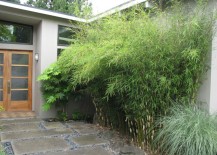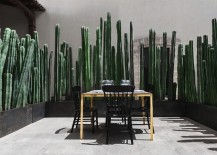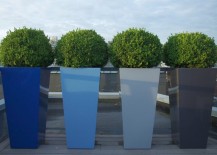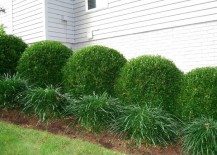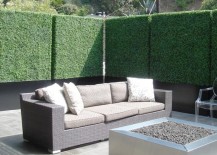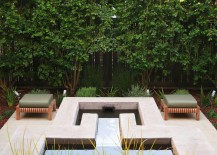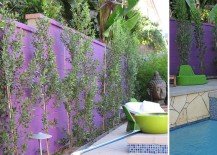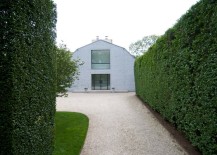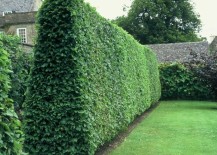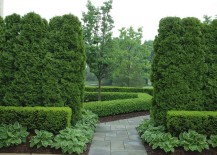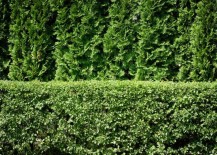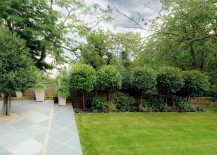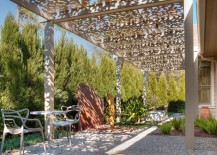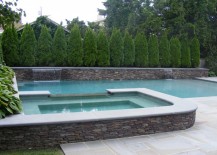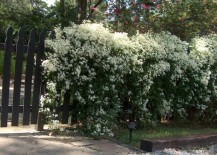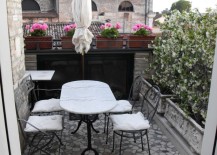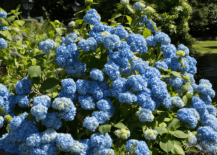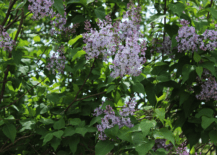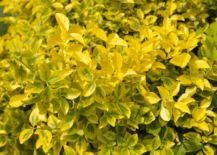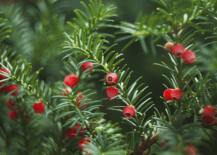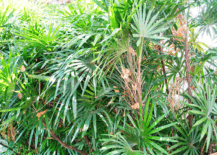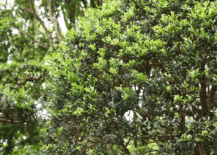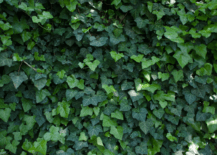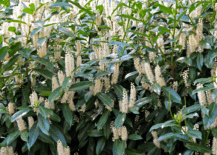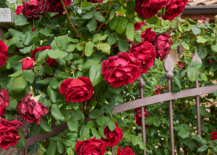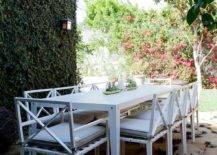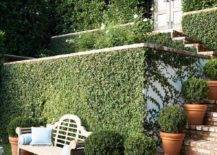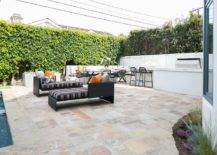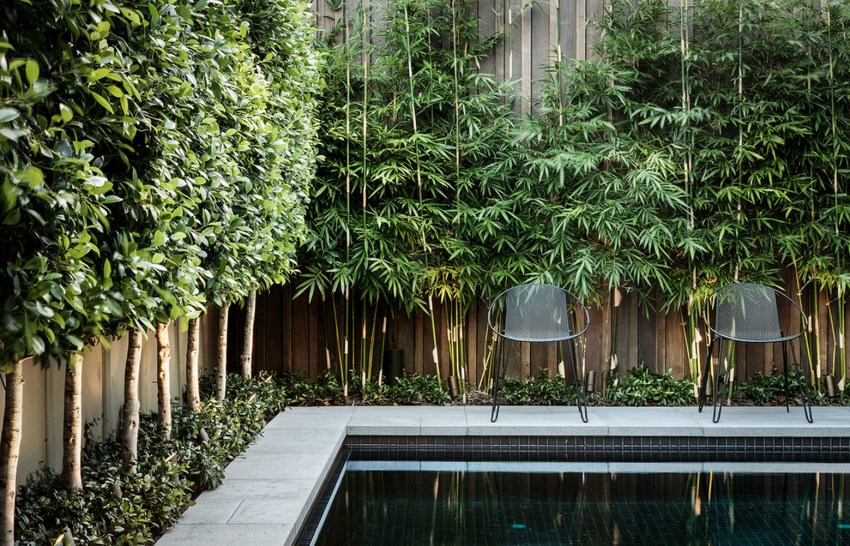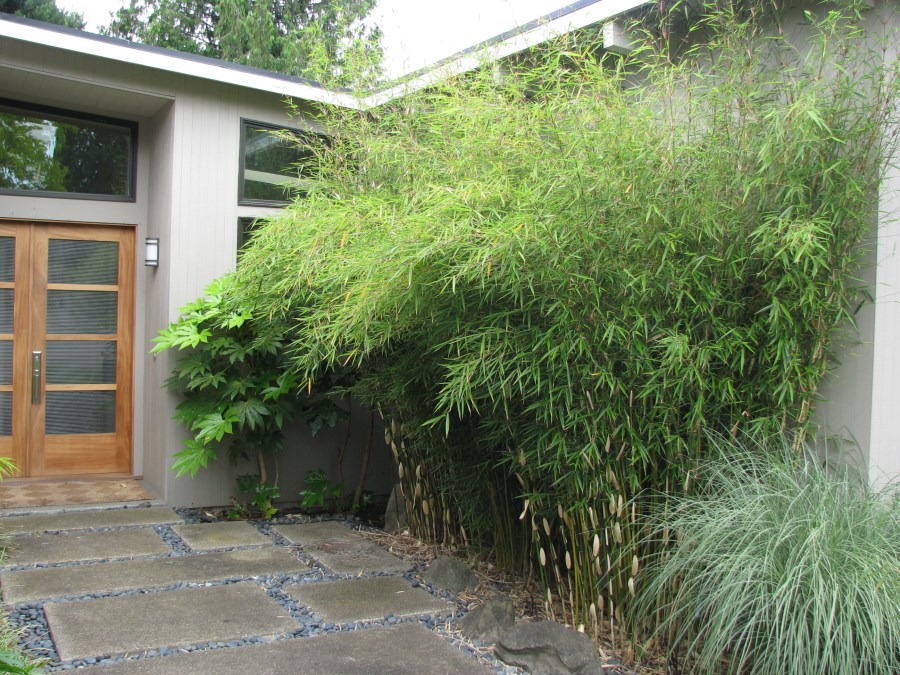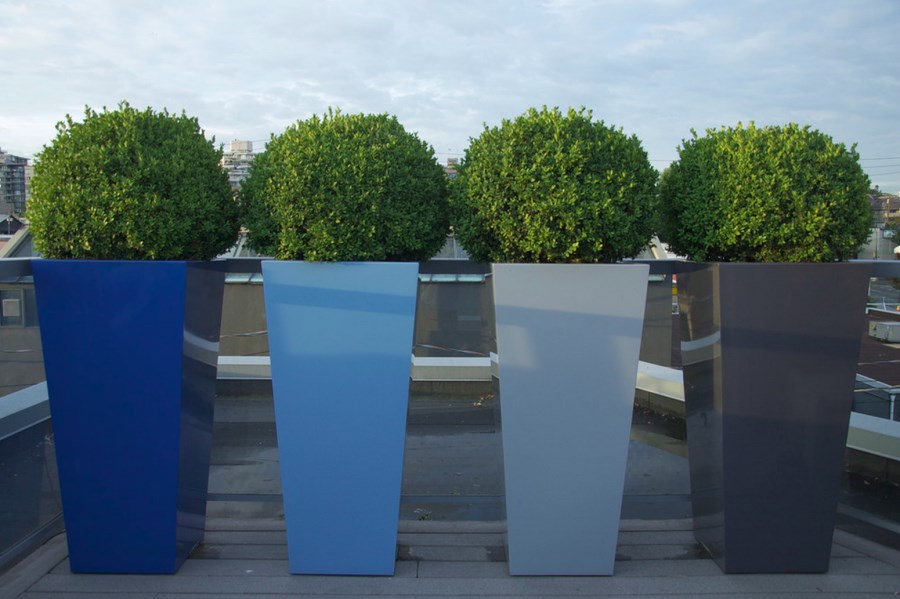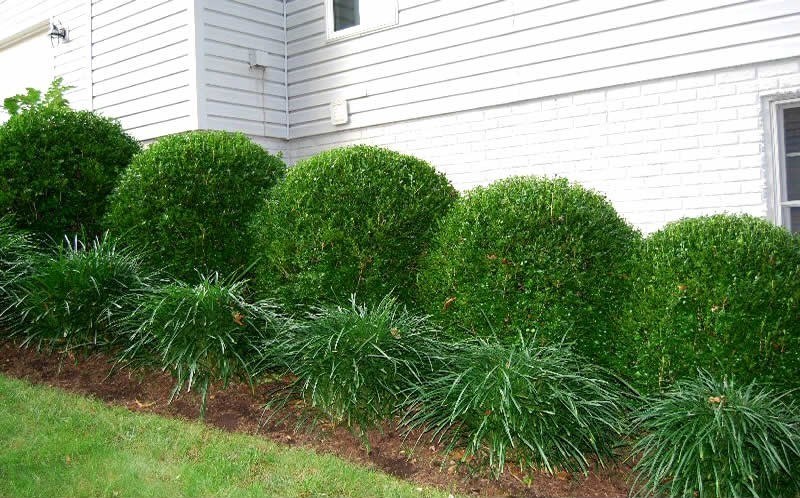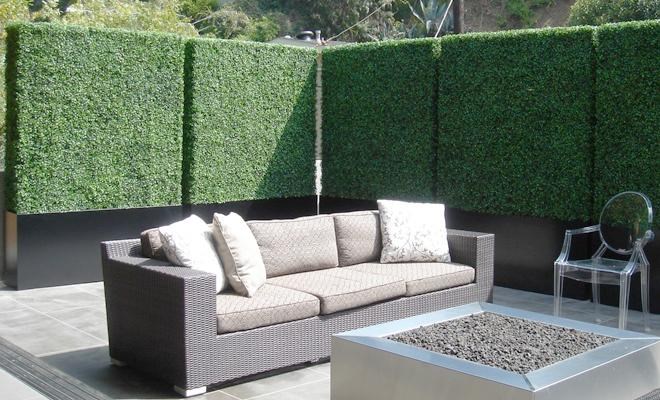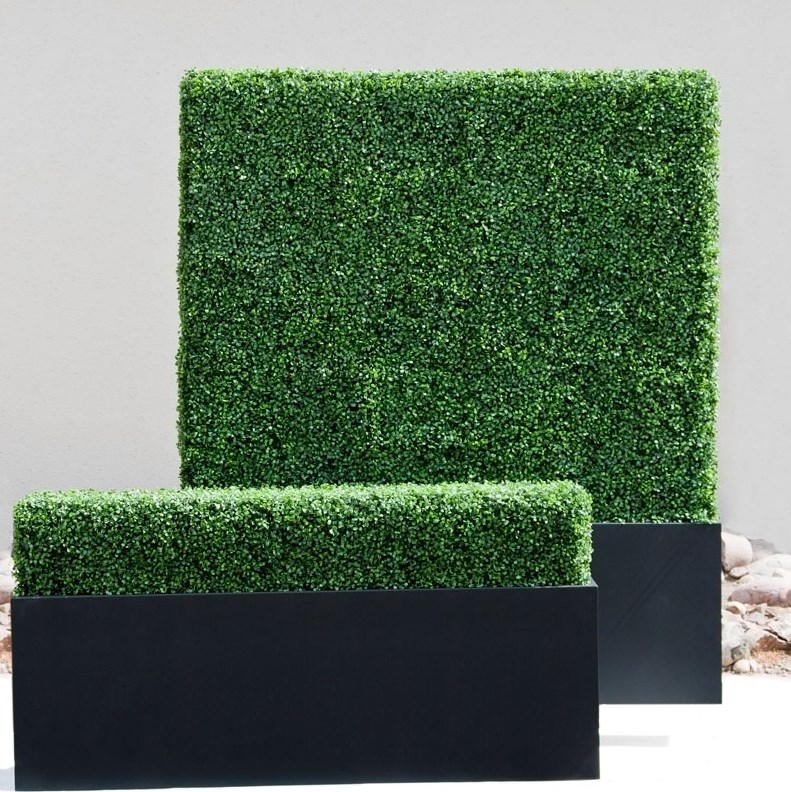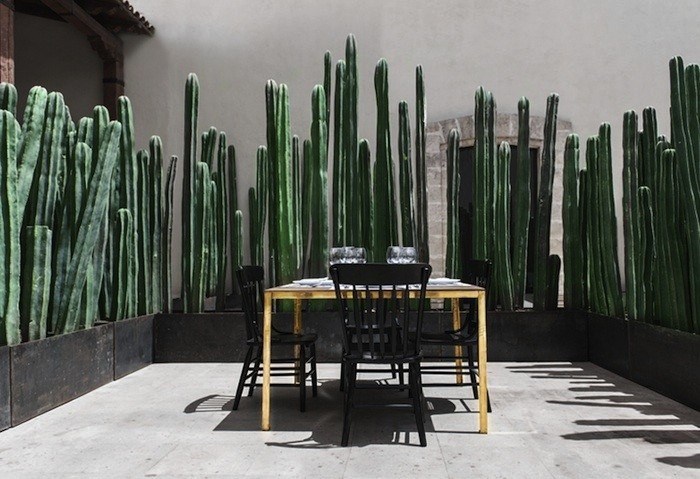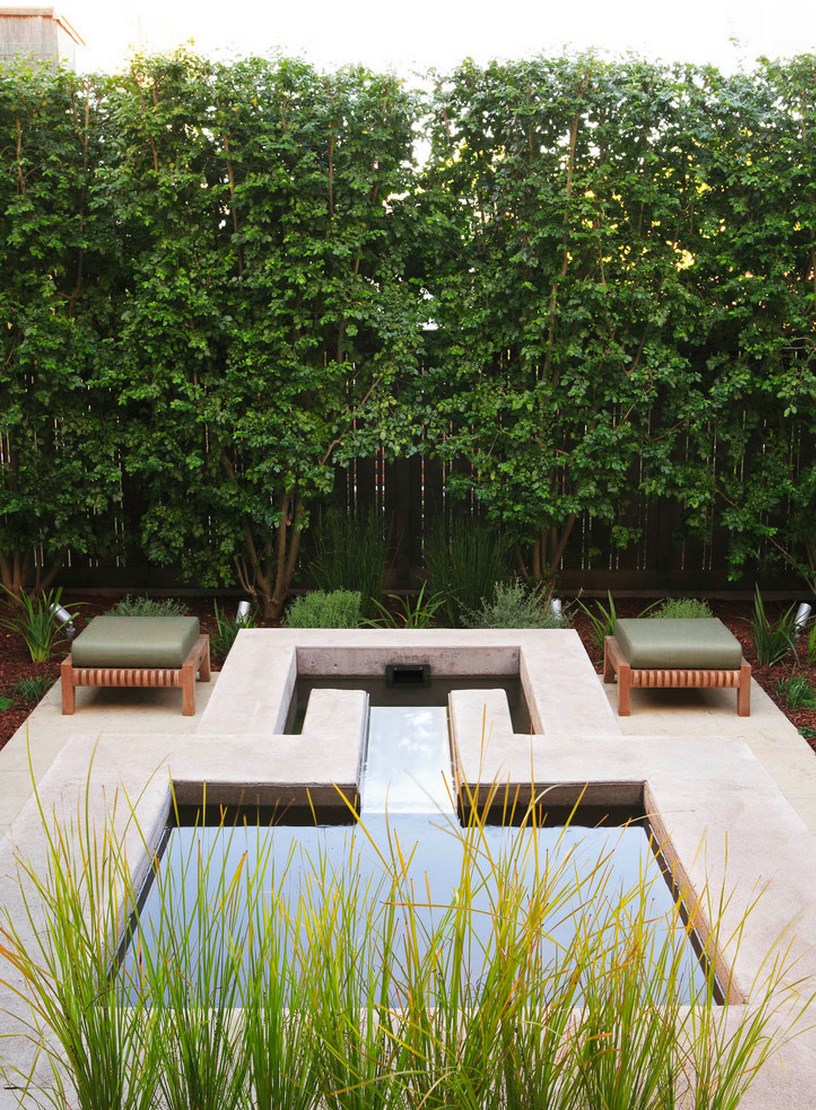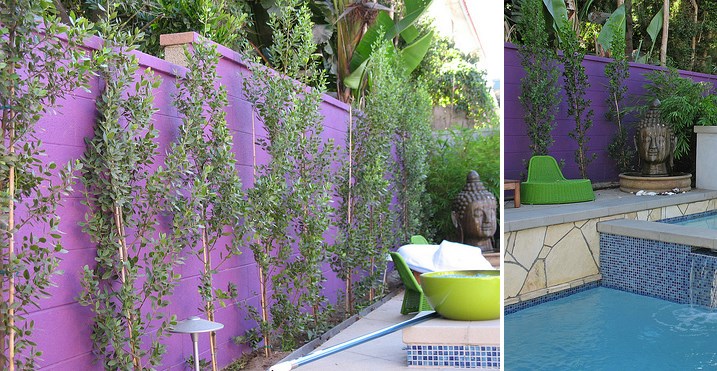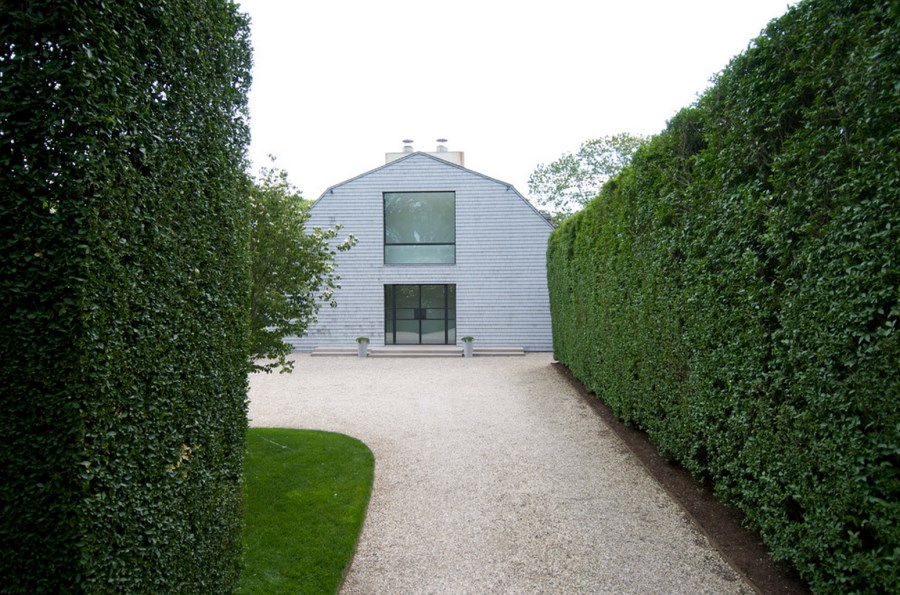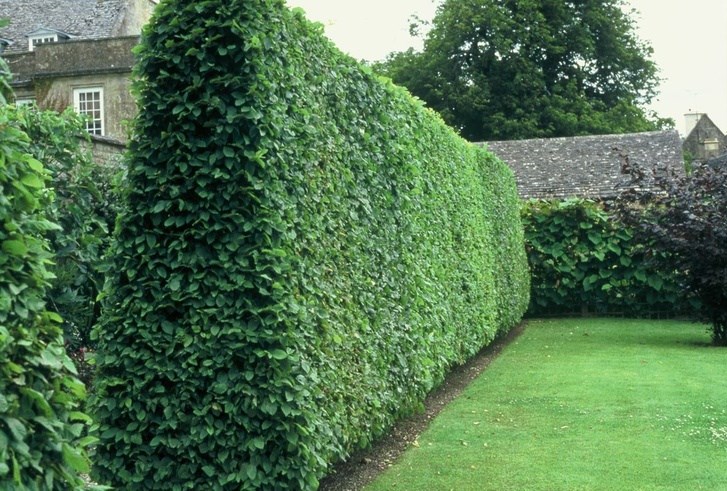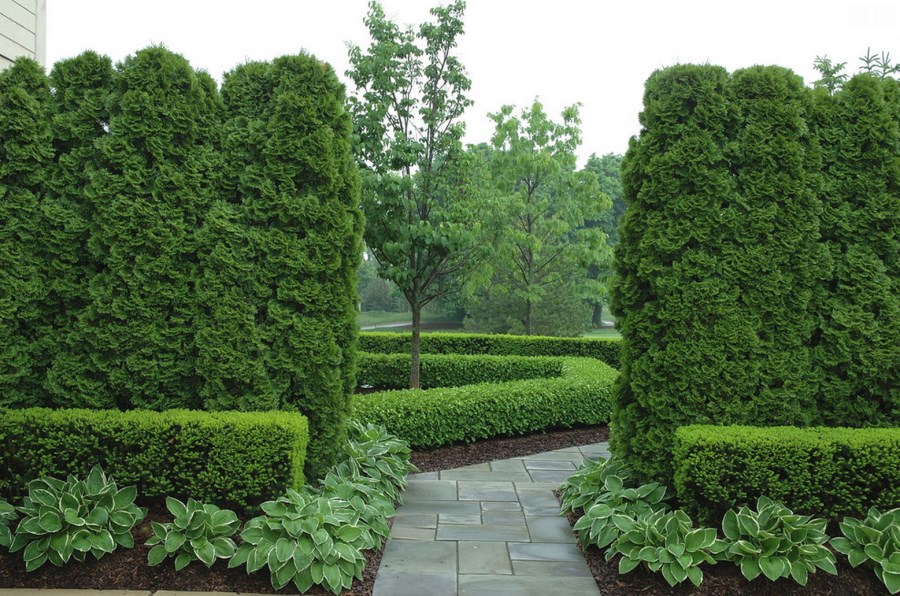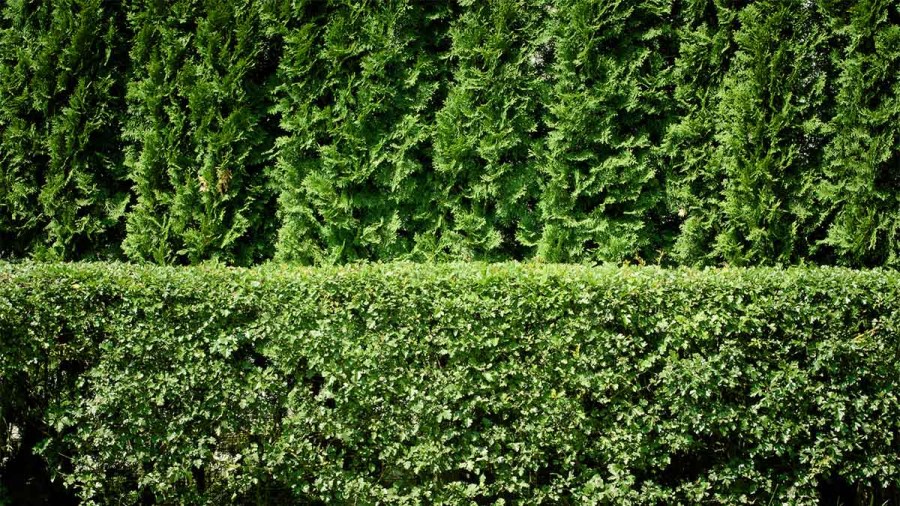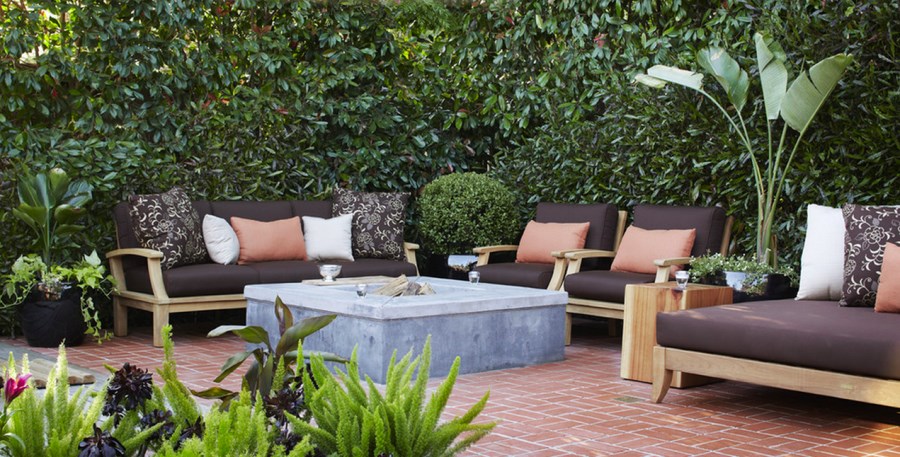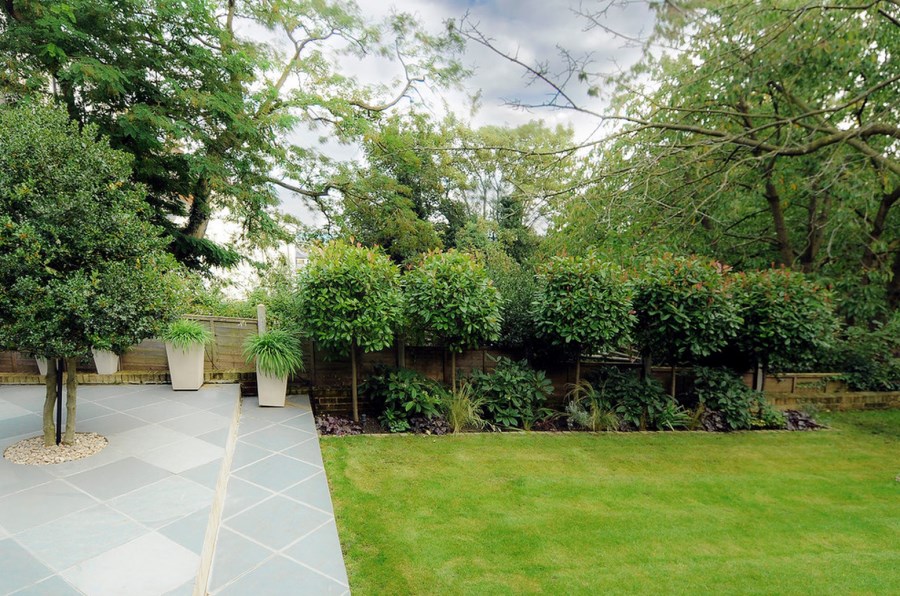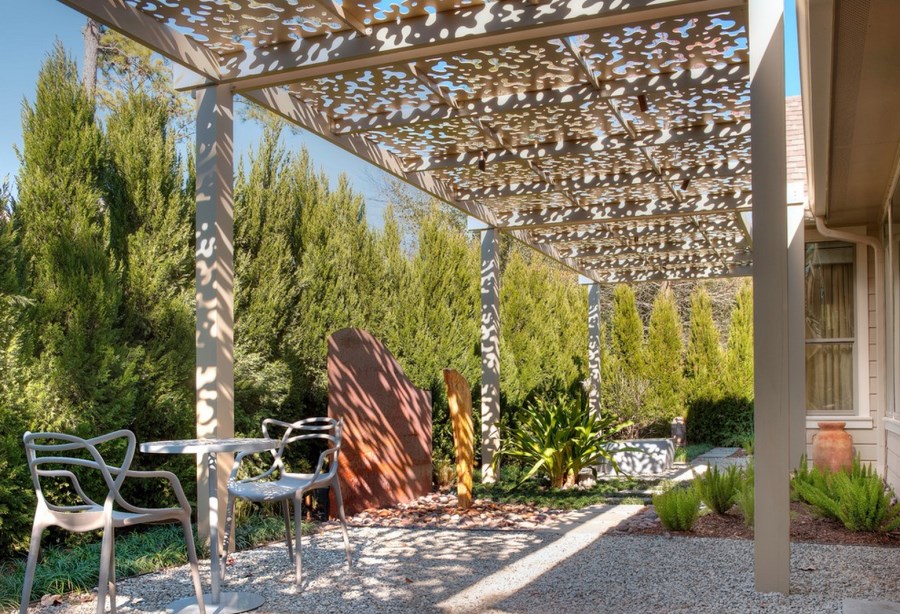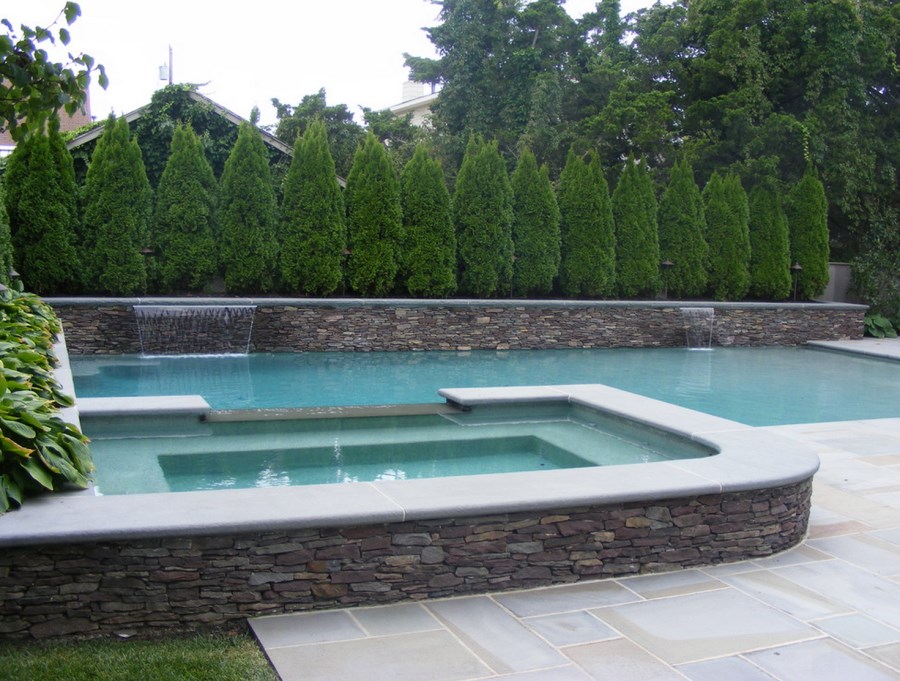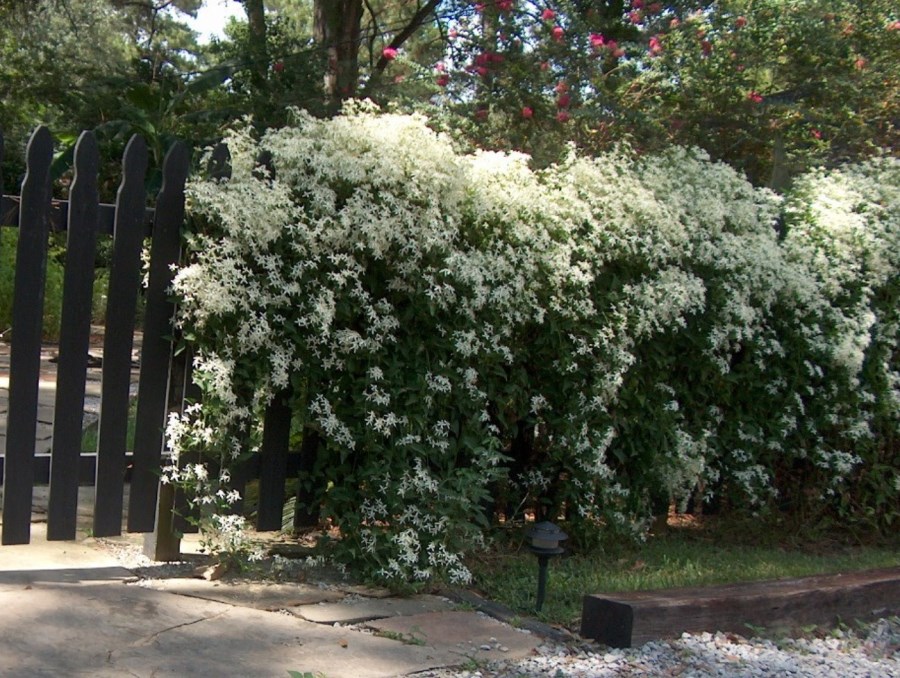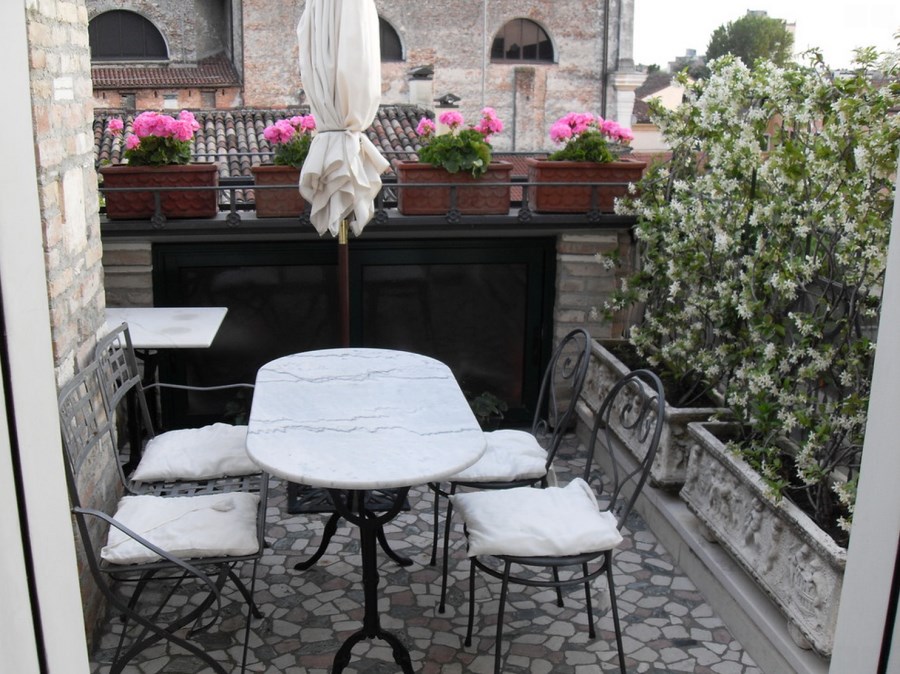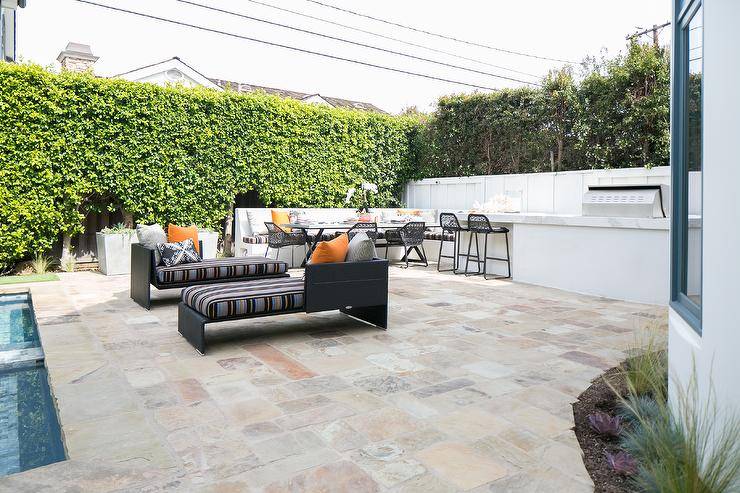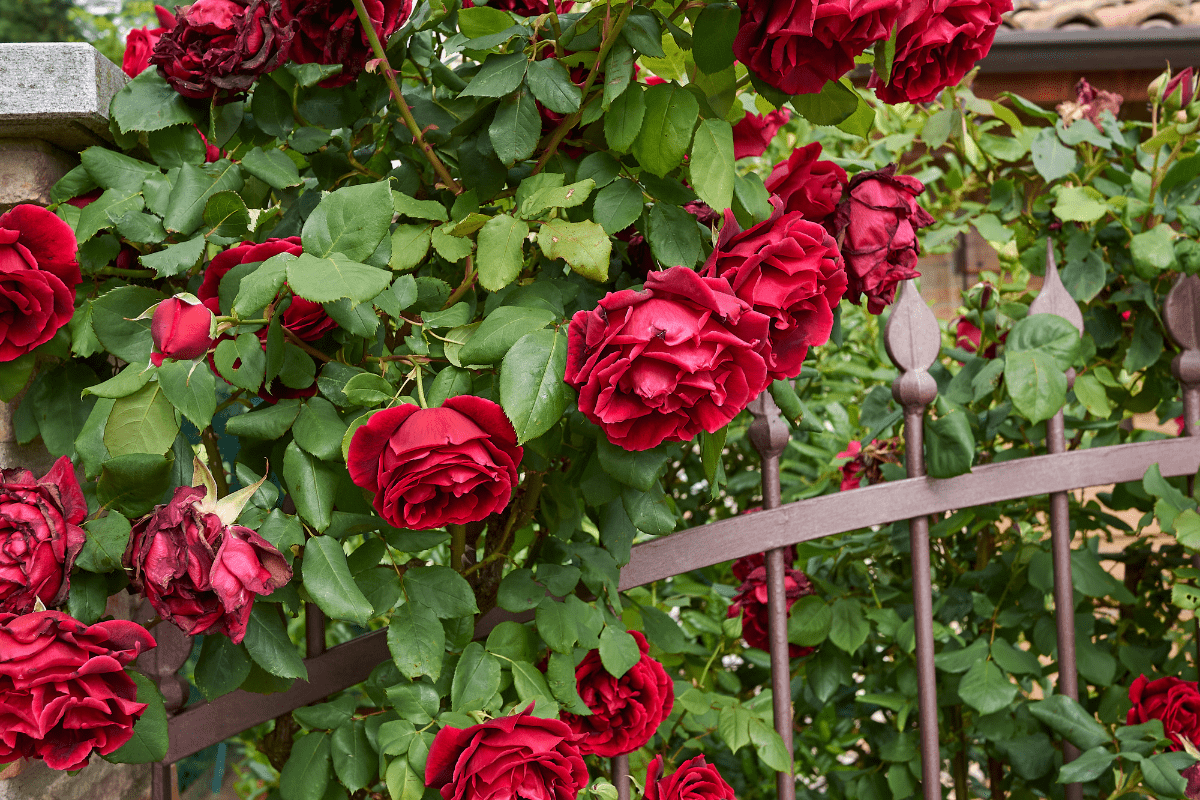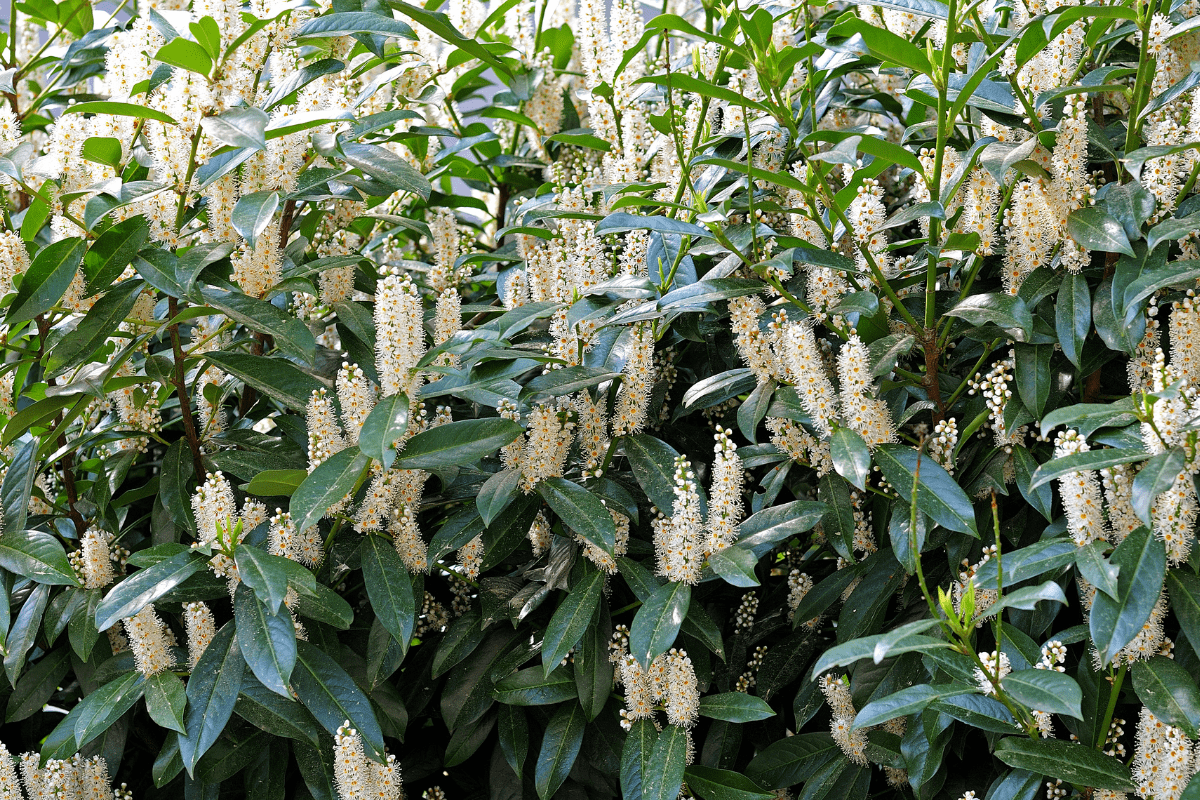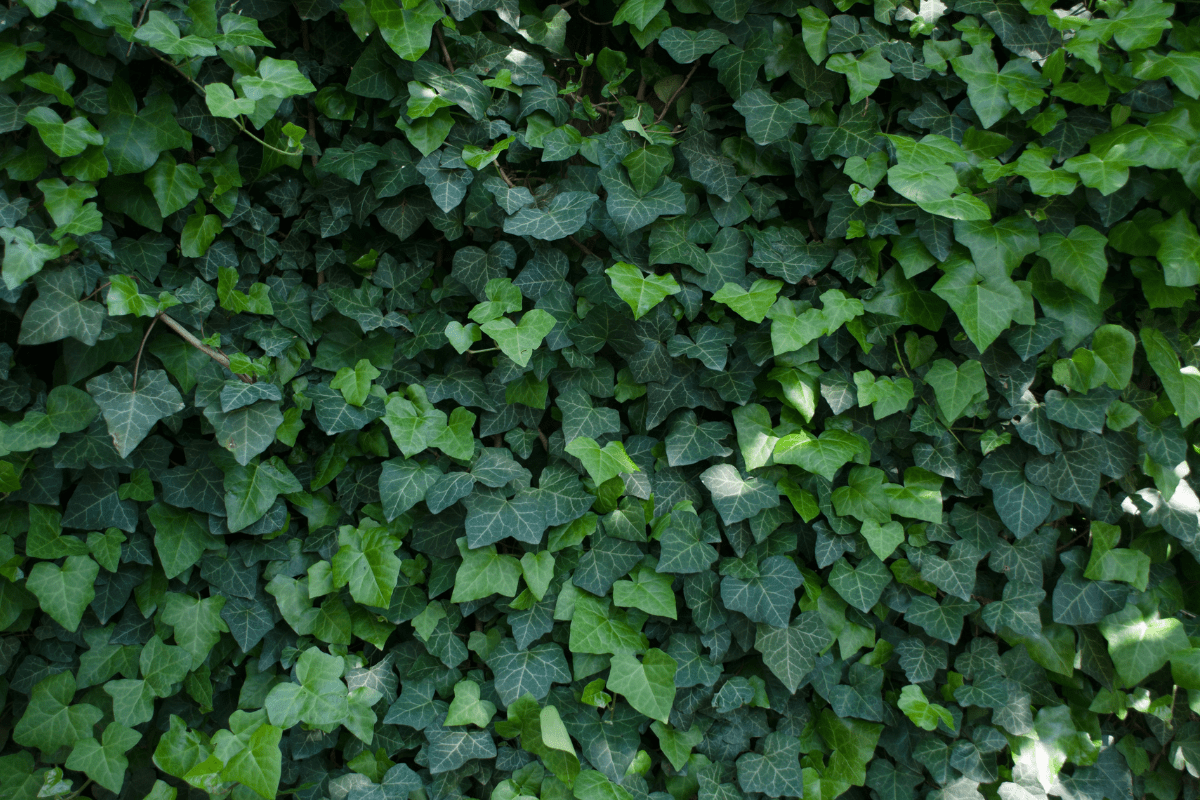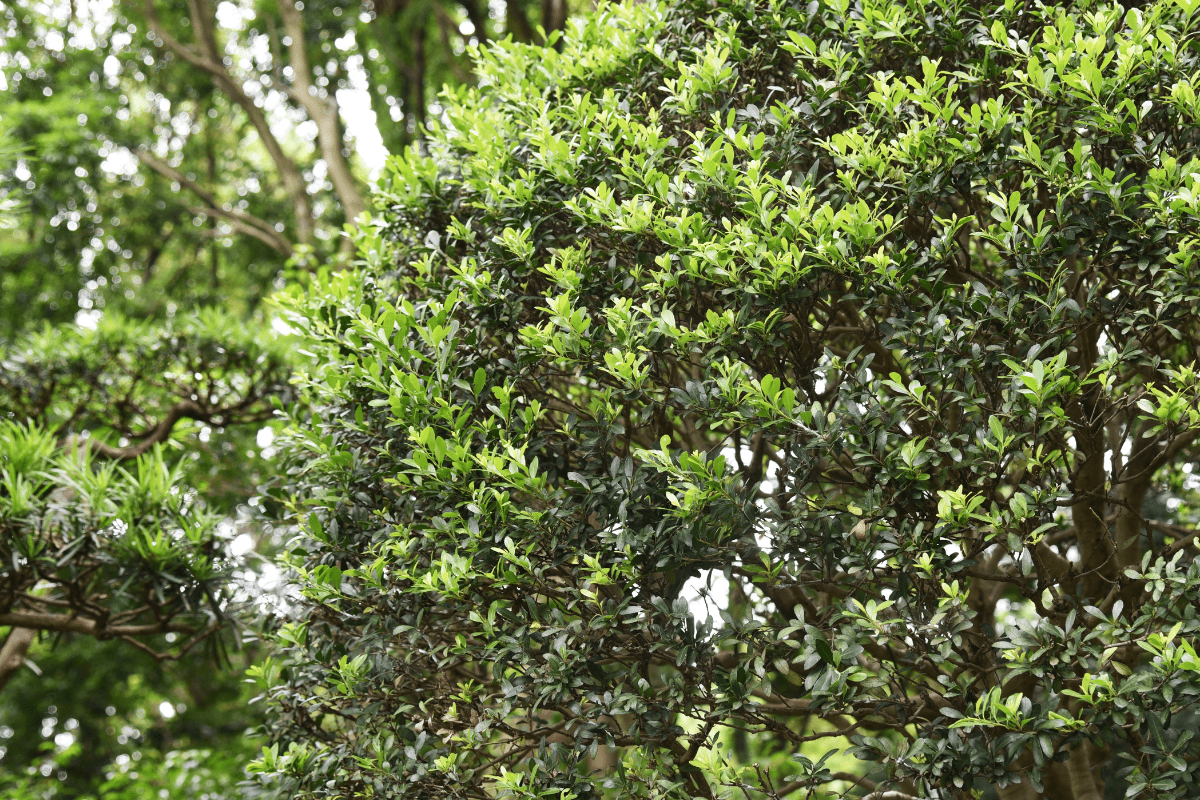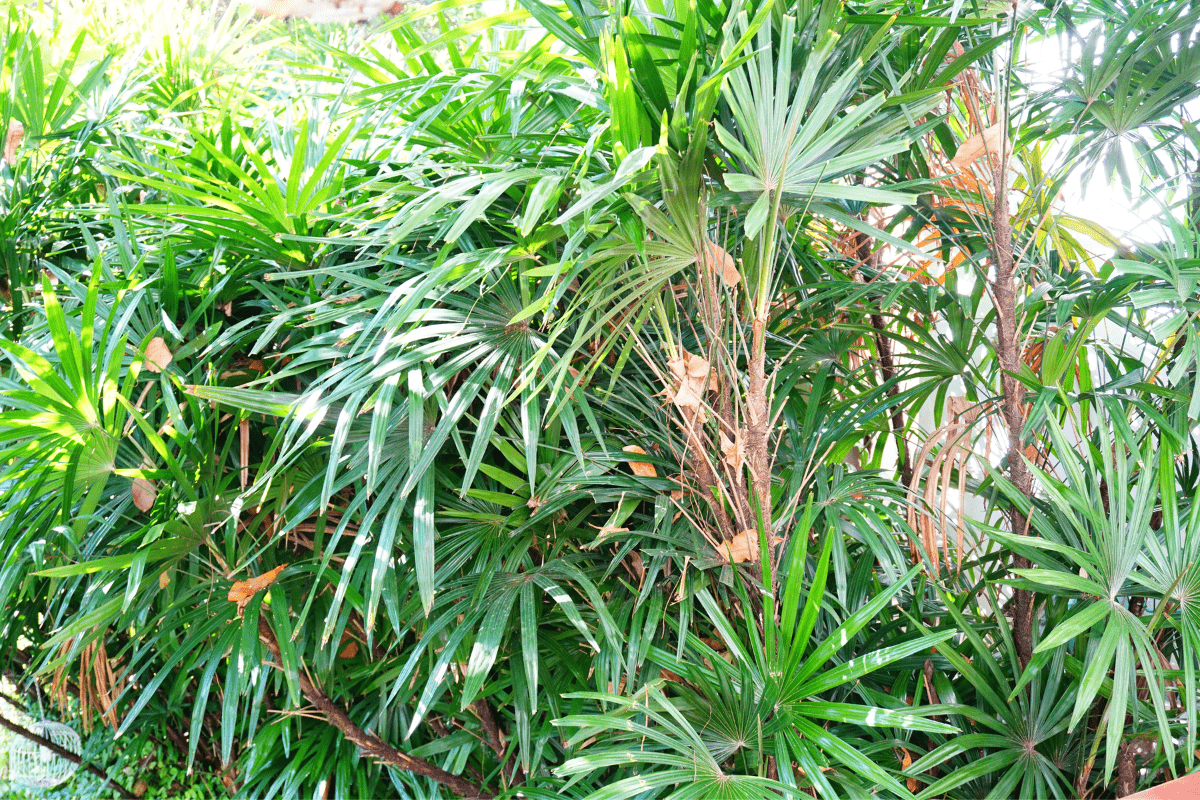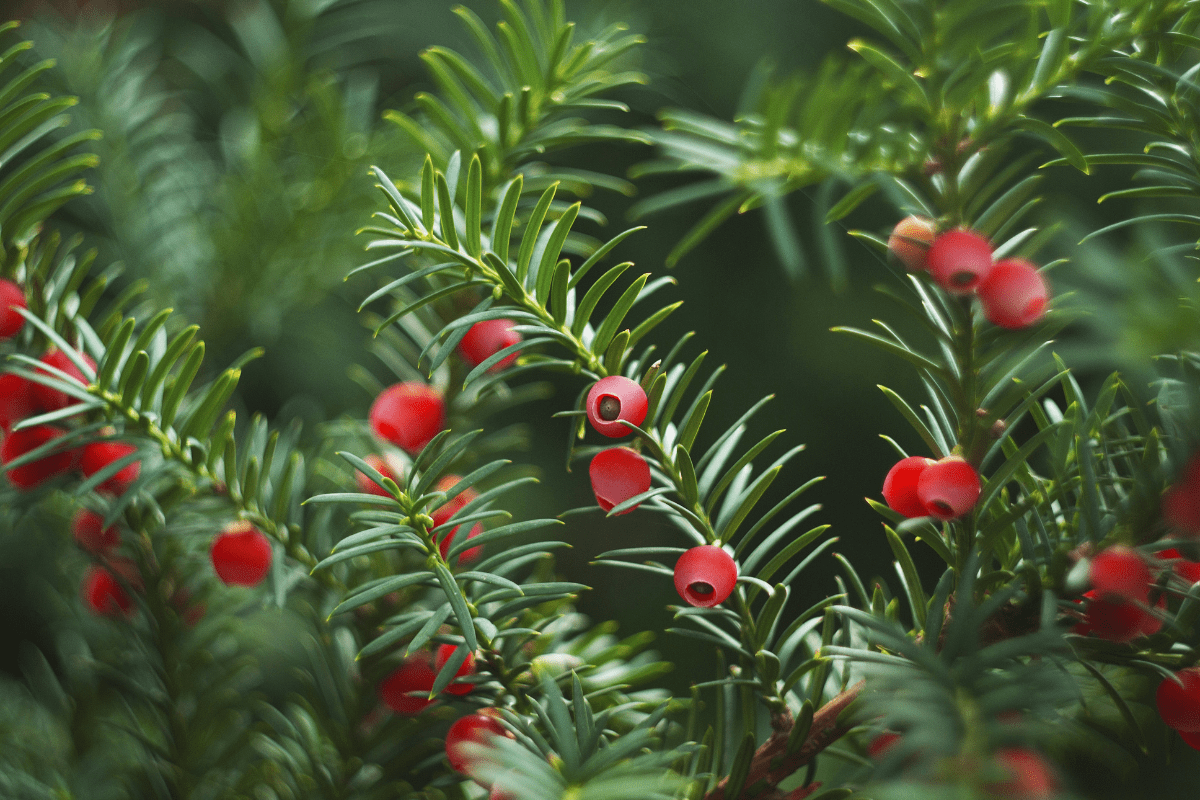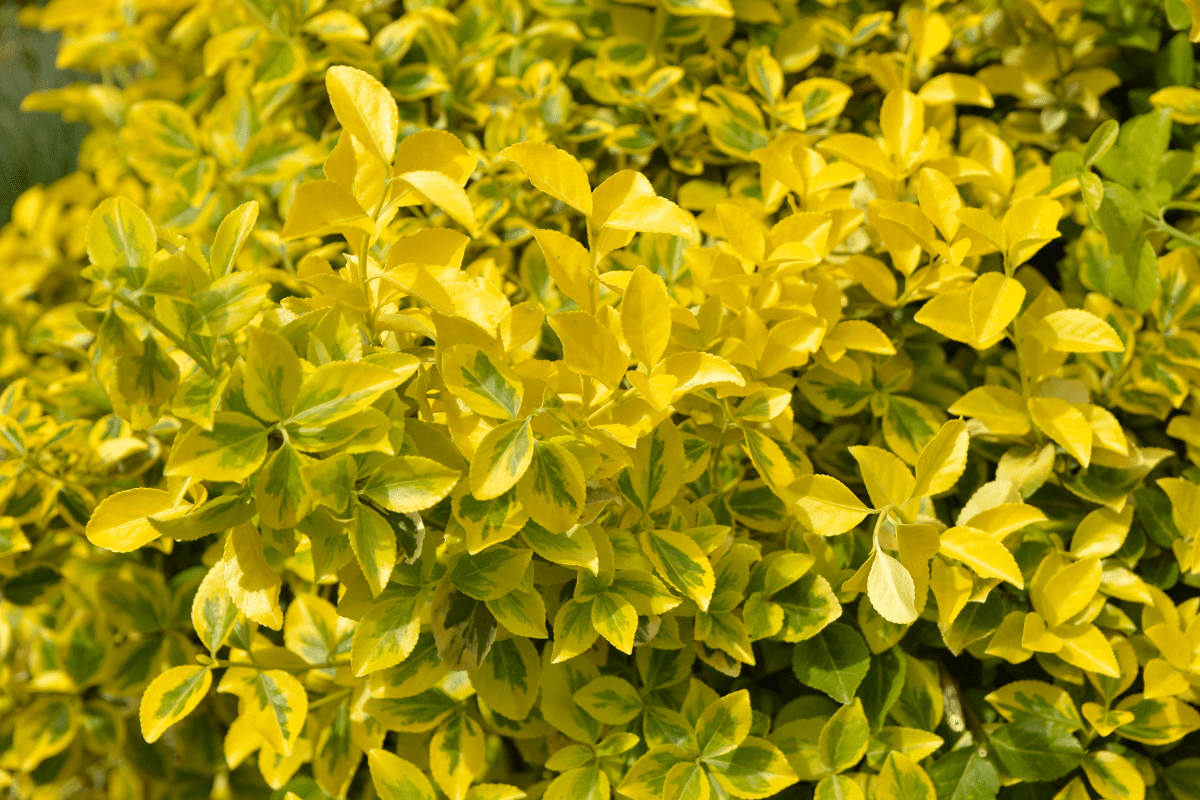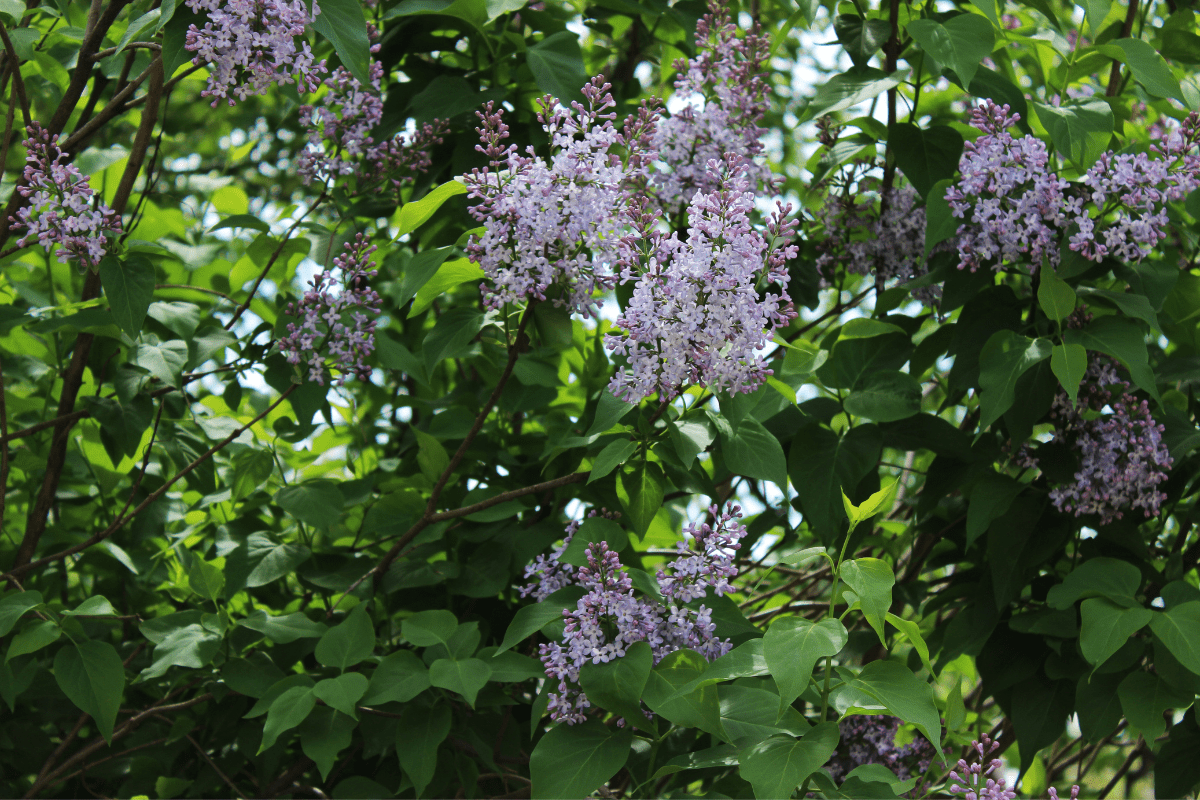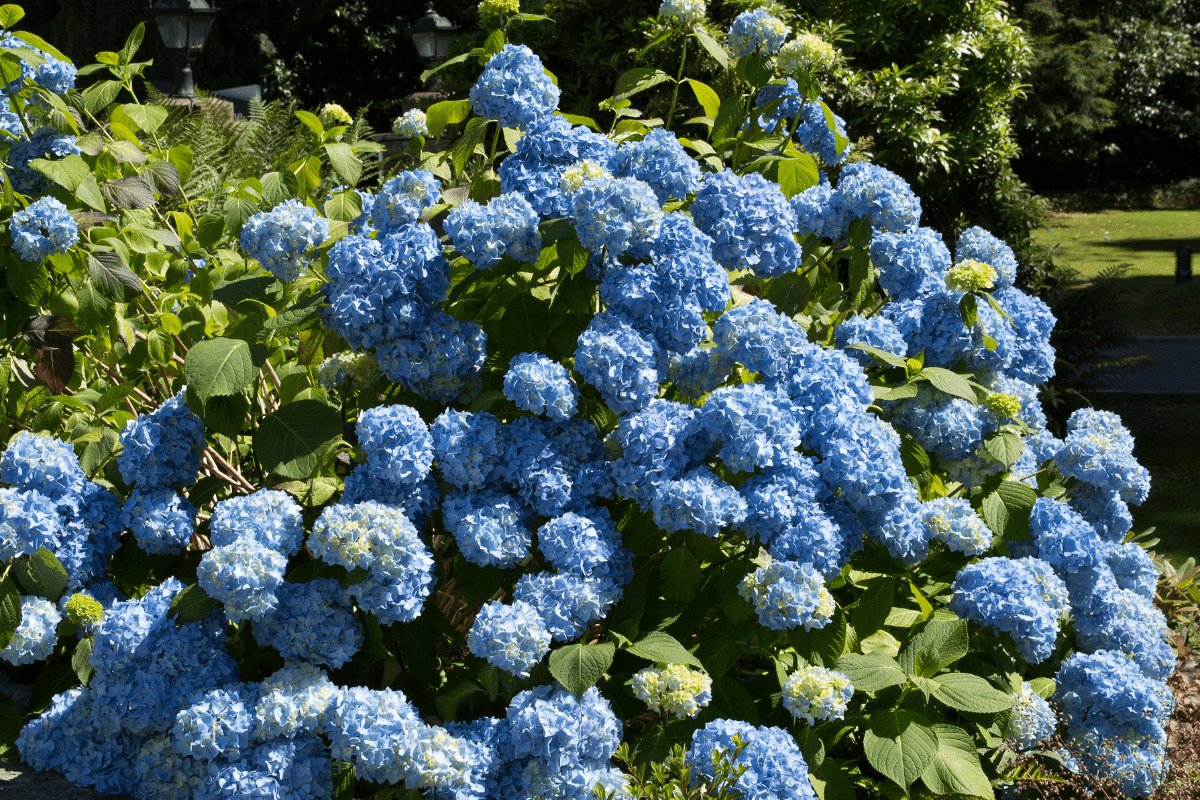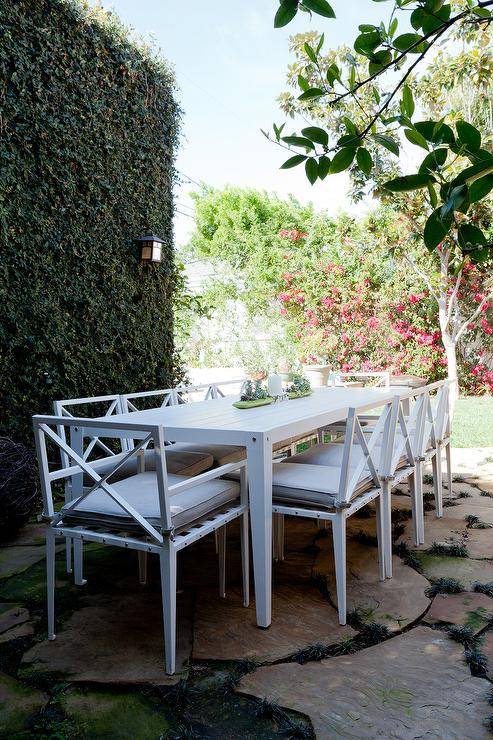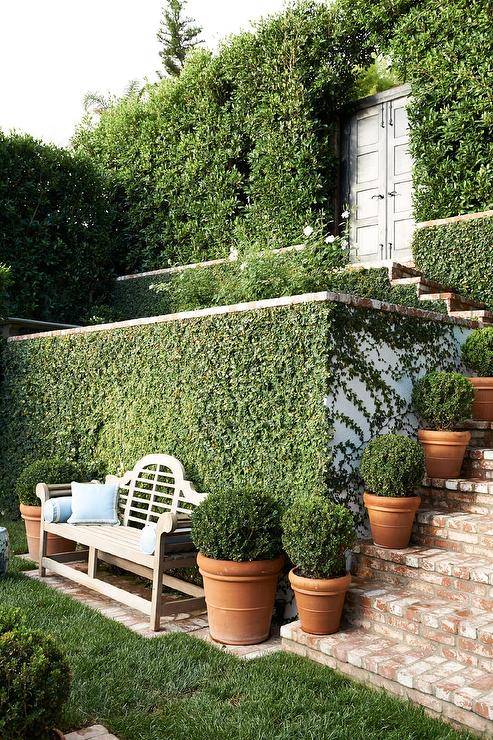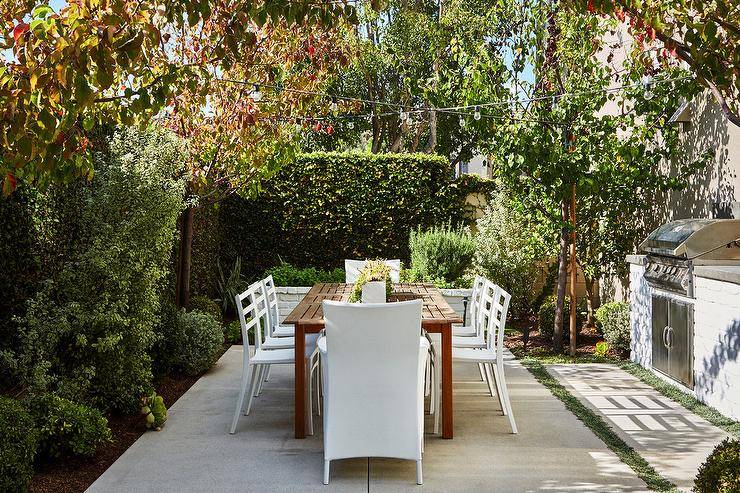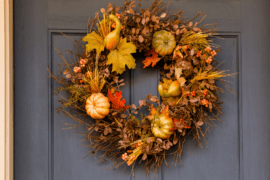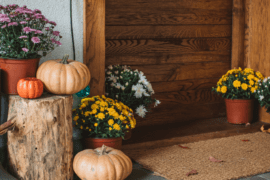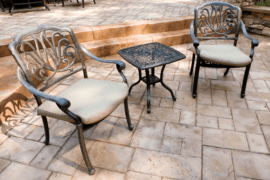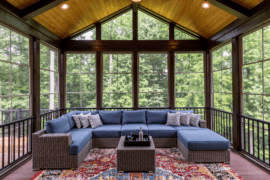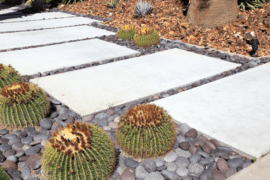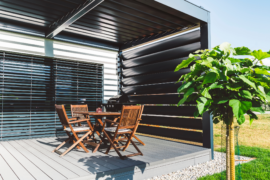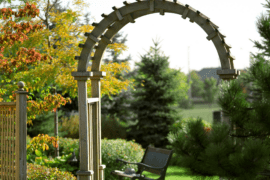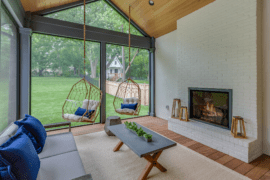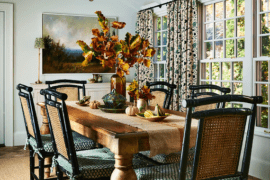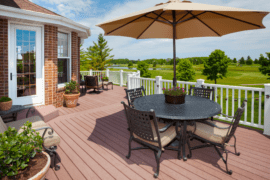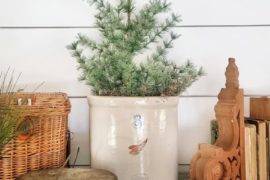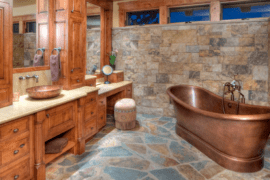We know that photos can be an amazing source of design inspiration, so this article may contain affiliate links that will direct you to a particular decor item. Clicking on a link may result in a portion of proceeds being paid to www.decoist.com
If you’re searching for ways to create a natural screen for your yard, today’s post is for you! Kate here, and I have a little bit of experience in this area. I spent the greater part of five years trying to block the view of my neighbor’s backyard, which had become a dumping ground for unwanted items. The problem: my living room overlooked the junk heap, and nothing but a chain-link fence separated our outdoor spaces. The solution: privacy plants.
Get ready for some interesting vegetation that can add shade, privacy, and beauty to your yard. Below you will find 10 options to choose from and don’t worry, we understand not everyone has a green thumb. We’ll be sure to provide you with artificial alternatives in case you’re worried about upkeep. And at the very end of the post, I’ll reveal what I ended up selecting for my backyard. Ready to get started?…
Privacy Plant #1: Bamboo
We begin with bamboo. That might not be the first thing you think of for privacy plants but I’ll change your mind. It adds height and modern style to the outdoor spaces it adorns. Below we see how a row of bamboo creates a poolside wall of greenery. But what about the fact that bamboo can be invasive and hard to maintain?! [from Anston Architectural]
Not all bamboo is invasive! While some can quickly get out of control, try Fargesia bamboos, which have clumping roots and grow more slowly than their unruly counterparts.
There are many perks to Fargesia, including the fact that it’s fast-growing, evergreen and hardy, even in the cold. For more information, check out Nursery Management. [photo from Bamboo Visions]
If you’re still worried about invasive bamboo, don’t forget it can’t invade if it’s not real! Why not try lining your yard with some of these artificial bamboo plants?
Privacy Plant #2: Boxwood
Boxwood is an ideal evergreen choice for privacy plants that you want to keep in pots and planters. Try tall, slender containers to add height, and sculpt the boxwood for a privacy screen with a bold, manicured statement! [photo from Cyan Horticulture]
Boxwood also makes a lovely option for the ground. It adds English garden-style charm when trimmed into spheres or hedges. If height isn’t a major factor with your privacy screen, you don’t need to wait for the boxwood to grow tall before achieving the results you desire. [photo from Gardenality]
Privacy Plant #3: Artificial Boxwood
If you need thick, tall, lush coverage and you want an instant living privacy fence, consider artificial hedges. In fact, artificial boxwood is catching on as the perfect solution if you don’t have the time to cultivate tall hedges. Below we see artificial boxwood that looks like a dense evergreen, from Planters Unlimited via Dwell on Design:
Another reason to go artificial: maintaining perfectly sculpted hedges takes time and money. These artificial boxwood hedges from Hooks & Lattice don’t require the maintenance of their live counterparts! Plus, they’re crafted from high-quality polyurethane with UV protection and hand-assembled. If you want an easy option, you can pick up these artificial boxwood tiles and simply attach them to a wooden base!
The dark green boxwood can be bolted to planters (also from Hooks & Lattice) for a clean, modern look. If you choose to go faux, do your research! Be sure you understand how much life you’ll get out of your investment. Be prepared for it to eventually begin to weather and fade.
Privacy Plant #4: Cacti
While not the obvious privacy plant choice, cacti create sculptural modern fencing options with an unexpected twist! A February 2015 Gardenista article by Jeanne Rostaing showcases the Mexican Fence Post cactus.
It’s shown below gracing the patio of El Montero restaurant in Mexico. Did you know that this cactus was used by Mexican landowners to designate property lines? [Photograph by Matthew Williams]
Cactus can be the perfect solution for hot, dry climates where they grow naturally. There’s nothing like the modern feel that a row of 20 feet tall cacti provides. Especially when used to enhance the architecture of a home. If you want to choose an artificial option it won’t be easy to find a 20-foot option. Still, there are some available such as this 31-inch fake cactus that would be a perfect privacy plant for a balcony or window. [photo by Bill Timmerman, from The Construction Zone]
Privacy Plant #5: Italian Buckthorn
We continue on our evergreen shrub kick, this time getting back to the real variety! Consider Italian Buckthorn for your privacy plants needs. This shrub will grow rather quickly during early spring, and its upright formations make it ideal for screen purposes. [from Arterra Landscape Architects]
Because it’s taller than it is wide, Italian Buckthorn is perfect for placement in front of walls. It’s even great to place in front of other structures that don’t need complete coverage. After all, why would you want to hide a colorful wall like the one below? [photo from Marina del Rey Garden Center]
If you love the idea of still showing off a wall, then you can truly use any artificial plant you please! We love the idea of placing a few artificial dracaenas in front of a pop of color.
Privacy Plant #6: Privet
It’s important to remember that tall, lush hedges (even fast-growing ones) can take years to cultivate. They don’t grow 15 feet overnight! If you have time to be patient, it’s well worth the wait to achieve a private space like the one in the next featured image.
Privet is the plant of choice in this stunning outdoor area. [photo by Doug Young, from Lear + Mahoney Landscape Associates]
Keep in mind that when you’re planting greenery such as Privet, it’s important to consider the needs of your space. You want to maximize the growing potential of the privacy plants you choose.
Carefully plan out your privacy screen, taking care to research the proper spacing of each plant. Consult an expert, such as a landscaper or a knowledgeable employee at your local nursery. For more information, visit Arbor Day Foundation. [photo from Popscreen]
Privacy Plant #7: Arborvitae
There’s something unique about the clustered, textured feel of Arborvitae’s greenery. This tree is often layered with other selections, such as Boxwood.
Below we see a lush garden filled with manicured evergreen trees and shrubs. Note the Arborvitae growing tall behind the Boxwood. [from Houzz]
If you’re considering planting Arborvitae as a privacy plant, there are some important hints to remember. Most important it the values of properly researching the best variety of the plant for your yard. Get more information at DoItYourself.com. [photo from Arbor Day Foundation]
Emerald Green Arborvitae
There are also many different types of Arborvitae. Among my favorite is the Emerald Green Arborvitae. Emerald Green arborvitae, which will eventually reach 12 to 15 feet tall, is a good choice for a four-season privacy planting.
Privacy Plant #8: Photinia
Photinia offers ample coverage, as well as glossy leaves that add richness to your outdoor space. This evergreen shrub is often used as privacy plants, as shown below in a hedge created by alternating Photinia with Dodonaea. [photo from Uurutia Design]
You can let your Photinia fill out, or you can trim and cultivate it, as shown in the next featured image. If you have other greenery, try mixing it in. You could also use a fence or wall behind it since trimming this plant is an eye-catching way to add interest to the yard.
Whether or not you go for a manicured look, it’s important to regularly prune Photinia. That way it stays healthy and thriving. [photo from Kate Eyre Garden Design]
Privacy Plant #9: Cypress Trees
There’s nothing like the tall, stately silhouette of a Cypress tree. Because this plant grows tall and narrow, it’s perfect for planting in a row to create a screen, as shown by the patio space below. [from Exterior Worlds]
Leyland Cypress is a popular privacy fence choice. The only downside is its lifespan: this tree has a short life, with many estimates being between 10-20 years.
As with all greenery you add to your yard, do your research. That way you can weigh factors such as cost and maintenance in relation to the longevity of your investment. [photo from U.S.A. Pools]
Privacy Plant #10: Vines
Let’s end today’s post by considering the option of vines! If you have a fence with gaps or openings (in other words, a not-so-private fence), a good climbing vine is a great solution. It adds privacy and beauty to your yard.
One option is Clematis, which grows quickly and produces beautiful blooms. However, beware that this vine requires dedicated pruning to keep it from growing out of control. In other words, if you want a fast grower, Clematis just might do the trick but be prepared to keep it in check. [photo from OnlinePlantGuide.com]
In contrast to the Clematis, plants such as Confederate Jasmine are slower growers. It can take years to cover a fence but providing solid, hardy evergreen growth with a big payoff. It is beautiful year-round and stunningly fragrant in the spring and/or summer (depending on where you live). This plant is perfect for balconies, patios, trellises, and chain-link fences.
In case you were wondering, this is the plant I chose to cover the fence in my backyard. It didn’t block the view of my neighbor’s boxes right away, but boy did it grow lovelier each year. Totally worth the wait. [photo from Alice Maslin via Houzz]
Privacy Plant #11 – Climbing Roses
Climbing roses are an excellent choice for privacy plants because they grow quickly and provide a great deal of coverage. They also come in a wide range of colors, shapes, and sizes, so you can find the perfect one to fit your landscaping needs.
Additionally, their fragrant blooms add a beautiful touch to any garden. They require minimal maintenance and can be trained to climb along walls, fences, and other structures for an aesthetically pleasing look. With proper care, climbing roses can provide a lush and colorful privacy wall for years to come.
Privacy Plant #12 – Cherry Laurel
Privacy Plant #13 – Ivy
Ivy is a superb privacy plant because it proliferates and is easy to maintain. It can quickly cover fences, walls, and other structures to form an effective barrier to block out noise and prying eyes. Ivy is also an excellent choice for privacy because it is evergreen, so it will keep its foliage year-round for maximum privacy.
It is also a very versatile plant, as it can be grown in sun or shade, and it can be easily trimmed to fit any desired shape. In addition, ivy is a beautiful plant, adding an attractive, natural look to any garden or outdoor space.
Privacy Plant #14 – Japanese Holly
Japanese holly multiplies quickly and is evergreen, meaning it retains its leaves all year round. It can reach heights of up to 10 feet, offering a dense and lush barrier between you and your neighbors. It’s also relatively low-maintenance and is tolerant of various soils and climates.
Plus, its bright green foliage is attractive, adding a decorative element to your landscaping.
Privacy Plant #15 – Fan Palm
Fan palm is fast-growing, easy to maintain, and can reach heights of up to 20 feet. Its thick foliage provides an excellent natural barrier between spaces, and its fan-shaped leaves create a unique, tropical look that can add a beautiful aesthetic to any garden.
It is also very hardy and can withstand various weather conditions, making it a great choice for any garden.
Privacy Plant #16 – Hicks Yew
Hicks yew, while not flashy, is a sensible choice for a living fence or privacy screen. This low-maintenance option sets a wonderful evergreen backdrop for the rest of a yard, and its soft needles and winter berries make it a fast favorite with backyard wildlife.
Privacy Plant #17 – Euonymus
Euonymus are privacy shrubs that come in many sizes and colors, including green, gold, and variegated varieties. This tall and sturdy shrub tolerates all types of weather and even poor soils. Planted close together, euonymus can serve as a lush hedge, but it also makes a big influence when pruned into a tree shape.
Privacy Plant #18 – Lilac
Planting a row of fragrant lilac bushes can create a beautiful and vibrant privacy hedge. With their colorful blooms, they can make a pleasant addition to any outdoor space. However, they do require plenty of sun, so if you have a shady area, you may want to consider planting another hedge instead.
Additionally, lilacs should be pruned annually to remove dead and damaged branches and promote healthy growth and flowering.
Privacy Plant #19 – Hydrangea
Hydrangea plants make a great addition to any yard, as they can reach up to 8 feet in both width and height. Planting multiple in a row creates a stunning focal point, with their cone-shaped blooms providing a great way to keep your garden private.
Keep in mind that these beautiful plants do lose their leaves in the fall, so you may want to consider pairing them with other hedge plants to ensure year-round coverage.
Which of today’s featured privacy plants would you consider for your outdoor space? Share your thoughts by leaving a comment below…
Frequently Asked Questions (FAQs)
What types of privacy plants are best for creating a privacy screen?
The best types of plants for creating a privacy screen are evergreen shrubs and trees, such as Thuja Green Giants, Leyland Cypress, and American Holly.
How tall do privacy plants need to be?
That depends on the size of the area you are trying to cover and the degree of privacy you want to achieve. Generally, privacy plants should be at least 6 feet tall, but it can be beneficial to plant taller plants if you need more coverage.
Are privacy plants easy to maintain?
Yes, most privacy plants are relatively low maintenance and can be easily trimmed and pruned to keep them looking their best.
How often should I water my privacy plants?
It depends on the type of plants you have, but in general, privacy plants should be watered at least twice a week during the growing season.

